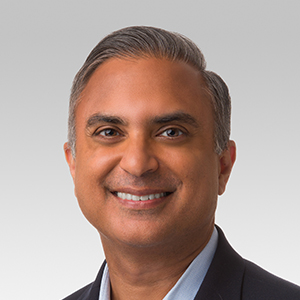Nothing But Air
Causes, Symptoms and Treatments for COPD
Published November 2021
You should not put anything but air into your lungs. What happens when you do?
Smoking and exposure to secondhand smoke are leading causes of chronic obstructive pulmonary disease (COPD), which causes trouble breathing. As many as eight out of 10 COPD-related deaths in the United States are caused by smoking, according to the Centers for Disease Control and Prevention (CDC).
Chronic lung diseases like COPD happen slowly.— Ravi Kalhan, MD
Two Main Ways COPD Affects Your Lungs
- Emphysema: destruction of air sacs in the lungs. "You have small, rubbery and elastic sacs in your lungs. When you fill them up with air, it comes out easily when you exhale," explains Northwestern Medicine Pulmonologist Ravi Kalhan, MD. "When you injure your lungs by smoking, these sacs lose their elasticity, becoming like limp grocery bags blowing in the wind. Air goes into them easily, but it does not come out easily."
- Airway blockage. Millions of windpipes, like branches on a tree, lead to the air sacs in your lungs. If you have COPD, these windpipes can become thick and filled with mucus, or squeezed shut like a rubber band is wrapped around them. They will stretch open to allow air into the air sacs when you breathe in, but then stay closed when you try to push the air back out. "People with COPD struggle with hyperinflation, or too much air in their lungs. It's very uncomfortable," says Dr. Kalhan.
COPD Symptoms
- Difficulty taking a deep breath
- Shortness of breath
- Frequent coughing or wheezing
- Excess phlegm and mucus
A flare-up is when symptoms get even worse. Every time you have a COPD flare-up, your lung function may get permanently worse. It is critical that you try to prevent flare-ups.
Signs of a COPD flare-up:
- More shortness of breath, coughing or wheezing than usual
- More or thicker mucus, or mucus that is a different color than usual
- Fatigue that lasts more than one day
- Swelling of the legs
- Sore throat
- Fever
- Cold-like symptoms
COVID-19 and COPD
Viral infections can cause deadly COPD flare-ups. It is critical that you try to prevent flare-ups by reducing your exposure to viruses if you have COPD.
People with COPD are more likely to get severely ill from COVID-19, according to the CDC. Dr. Kalhan has also done research showing a higher death rate from COVID-19 for people with COPD.
Treatment Options for COPD
Once your lungs are damaged, the elasticity of the air sacs and windpipes cannot be restored. Treatment for COPD can slow the progression of the disease and help with symptoms.
- Inhaled medications. Multiple inhaler-type medications are available that can help loosen your windpipes to allow for air to more easily pass through.
- Exercise. "Exercise not only can help improve shortness of breath, but it can also help prevent COPD flare-ups," says Dr. Kalhan. "It may be difficult to exercise with COPD, but there are rehabilitative exercises you can do alongside a respiratory therapist to help improve breathing."
- Oxygen. People with COPD may have low blood oxygen levels because their lungs are not releasing enough carbon dioxide to make room for the oxygen their cells need. A portable oxygen tank can help.
- Don't put anything but air into your lungs. Quit smoking, and avoid secondhand smoke and other air pollutants. Not enough data has been collected yet on long-term use of e-cigarettes, but Dr. Kalhan is studying millennial health habits, including how long-term e-cigarette use impacts the lungs.
How to Prevent COPD
Do not smoke. If you do smoke, quit. You can also get screened for chronic lung conditions.
"Chronic lung diseases like COPD happen slowly, so often you don't notice symptoms until it's too late," says Dr. Kalhan. "Over time, people start to experience more shortness of breath and develop more lung issues like bronchitis and think it's a normal part of aging, but it's not. If you are having these issues, you should talk to your physician about your smoking history and lung health, and start a plan for your respiratory health."







